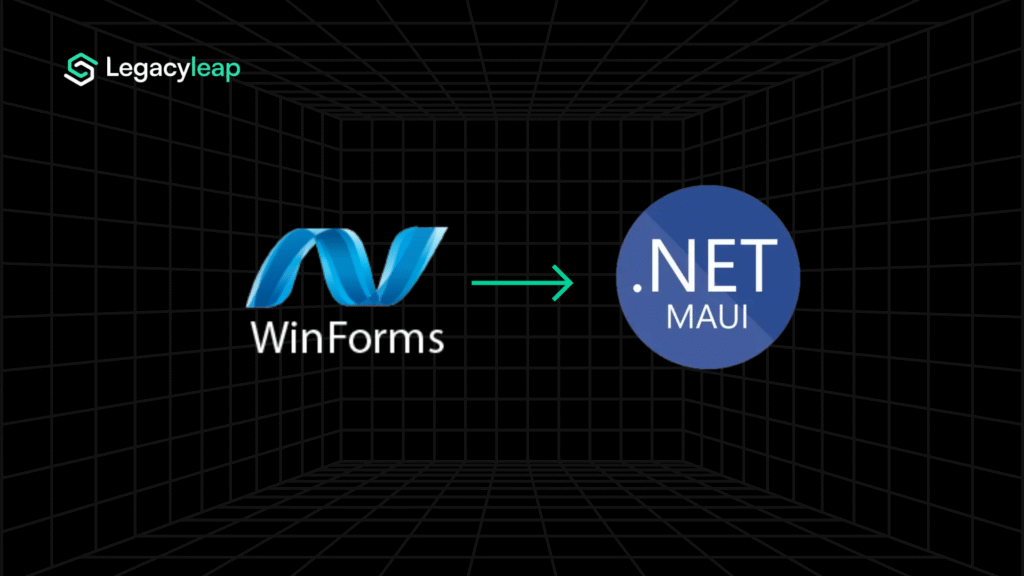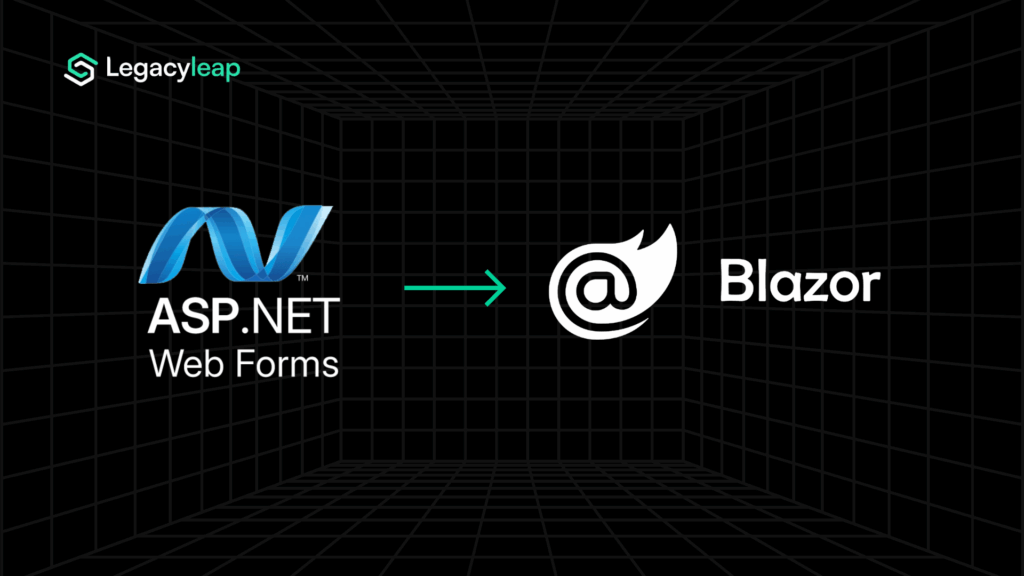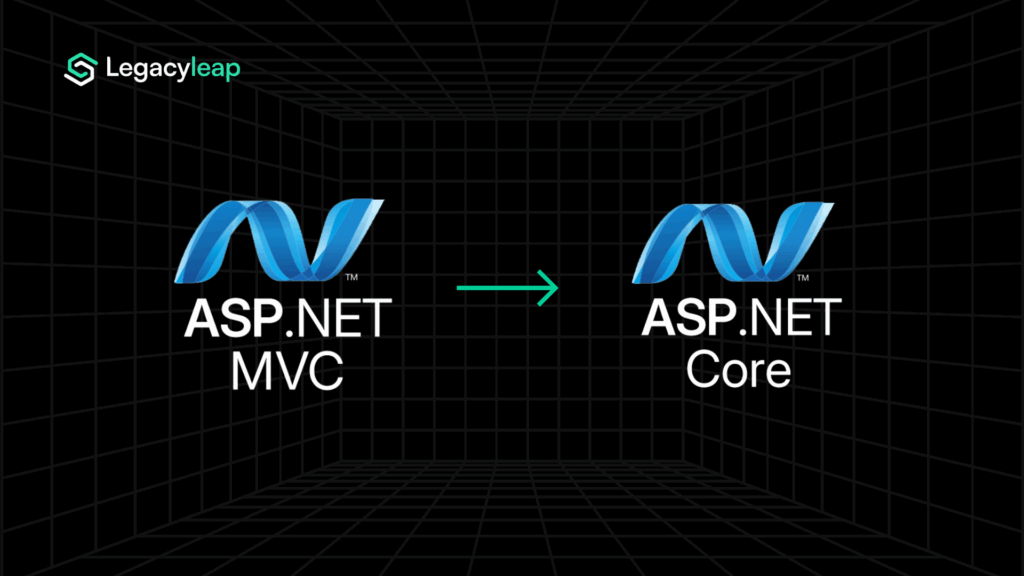In a world that’s always creating more data, keeping legacy data locked in outdated systems is like building skyscrapers on quicksand. For organizations today, modernizing data infrastructure means more than simply migrating to the cloud or updating a database. It’s about transforming how they approach, interpret, and leverage data for growth.
Every day, around 2.5 quintillion bytes of data are created globally, with that figure exponentially growing day by day. Traditional databases, designed for a different era, struggle to efficiently handle this explosion of data. This makes database modernization a key initiative for organizations looking to navigate the data deluge effectively.
Broader industry trends reinforce this urgency: by 2025, nearly half of enterprise workloads will be cloud-hosted, and over 70% of IT leaders list cloud optimization as a top priority. Database modernization is no longer optional but central to staying competitive.
In this blog, we’ll dive into the world of database modernization, discussing the many benefits it can bring, and some of the common challenges organizations face during the modernization process, from data migration hurdles to team resistance. Plus, we’ll share practical strategies to help you successfully navigate your modernization journey.
What is Database Modernization?
Database modernization is the process of upgrading your database systems to better meet the demands of today’s business environment. This process involves a comprehensive strategy to improve data storage and retrieval systems’ efficiency, scalability, and performance.
It typically includes the adoption of emerging technologies, redesigning data architectures, migrating databases to the cloud, and applying advanced data management techniques that allow for faster data retrieval and more complex analytics.
A practical data management strategy leveraging database modernization offers a clear path to rapidly eliminate technology debt. Database modernization has become imperative, offering a transformative pathway for organizations to stay agile, secure, and adaptable.
You might ask, how is database modernization different from a simple cloud migration? Migration moves the data; modernization enhances it with agility, compliance, and analytics capabilities.
What Are the Key Drivers of Database Modernization Today?
The need for database transformation is driven by rising data volumes, the shift to cloud database migration, and demands for advanced security and compliance. Here are some key drivers that are making database modernization a top priority:
- Rising Data Volume and Type: With the explosion of data, because of excessive usage of social media, IoT devices, and e-commerce transactions, traditional databases can struggle to keep up. Organizations need systems that can handle diverse data types and large volumes efficiently. Modern databases are designed to manage and analyze these vast data landscapes, providing insights that can lead to better decision-making.
- Data Driven Decision Making: Today’s businesses can’t afford to wait for insights. Customers expect instant responses, and companies need to make data-driven decisions on the fly. Modernizing your database enables real-time analytics, allowing you to respond quickly to market trends and customer needs. This agility can set you apart from competitors still relying on outdated systems.
- Keeping Pace with Emerging Tech Advancements: The rise of artificial intelligence, machine learning, and cloud computing has transformed the tech landscape. Modern databases are built to integrate seamlessly with these technologies, allowing organizations to harness their power for better insights and automation.
- Cost Efficiency: Maintaining legacy systems can be costly, not just in terms of the technology itself, but also the resources required to keep them running. Modern databases often reduce operational costs through improved efficiency, scalability, and the ability to leverage cloud resources. This means you can save money and allocate resources to more strategic initiatives.
For instance, one enterprise reduced infrastructure costs by nearly 20% through a structured migration to AWS, while also removing dependencies on third-party services. This highlights how modernization directly impacts both spend and operational resilience. - Security, Compliance, and Governance: With growing concerns around data breaches and regulatory compliance, modern databases come equipped with advanced security features. This helps organizations protect sensitive data and comply with regulations like GDPR and HIPAA, which can be a significant burden on outdated systems.
What Are the Main Benefits of Database Modernization?
One of the biggest immediate benefits is the reduced expenses that come from moving data out of in-house data centers and onto more powerful systems like RDBMS, NoSQL, and Hadoop. This leads to improved productivity and lower maintenance costs while allowing for a quick change to meet business goals.
Most modern databases feature user-friendly graphical interfaces, which make tasks like database administration and process management much simpler. This means IT teams can focus on more important projects instead of getting bogged down by the need to maintain outdated systems.
Q: Is database modernization worth the investment?
A: Yes. While initial costs can be high, long-term savings in maintenance, scalability, and automation deliver a higher ROI than maintaining legacy systems.
Here are the top benefits of database modernization, from cost efficiency and scalability to democratized data access and advanced analytics integration.
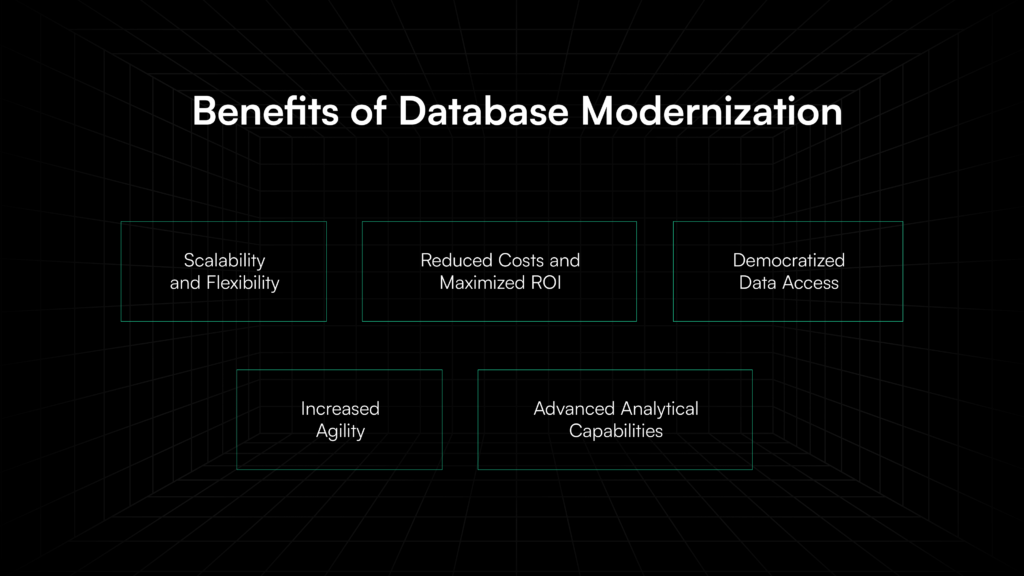
Scalability and Flexibility
Modern databases are built to handle high transaction volumes and large datasets with ease. This means faster query responses and the ability to scale resources up or down based on demand.
Whether you’re experiencing peak traffic during a holiday season or managing a steady flow of transactions, modern systems adapt to your needs seamlessly.
Reduced Costs and Maximized ROI
While the initial investment in modernization can be expensive, the long-term savings often outweigh the costs. Modern databases can reduce maintenance overhead, improve resource allocation, and cut down on hardware expenses, especially when transitioning to cloud-based solutions.
By utilizing cloud-based platforms, organizations can reduce infrastructure expenses and benefit from flexible pricing models that align with their usage. This means more budget for strategic initiative.
Democratized Data Access
Advanced data systems centralize data from various sources, making it easier for users to access critical information. With upgraded systems, your teams can access data more easily and quickly.
This improved accessibility enables data-driven decision-making across all departments, from marketing to operations. Everyone has the tools they need to leverage data, fostering a culture of collaboration and innovation.
Increased Agility
Upgraded data platforms allow organizations to pivot quickly, implement new strategies, and respond to market changes without being bogged down by outdated technology. This agility enables quicker innovation cycles and supports timely decision-making, allowing businesses to stay ahead of the competition.
Advanced Analytical Capabilities
Streamlined data ecosystems support advanced analytics, including machine learning and artificial intelligence applications. These capabilities allow organizations to derive deeper insights from their data, predict trends, and make proactive decisions based on real-time information.
Consider Netflix, which uses Apache Cassandra to process over 140 million hours of viewing daily. Real-time analytics enable the platform to make immediate content and operational decisions, a clear example of how modernized databases unlock scale and agility.
How to Plan a Successful DB Modernization
Modernizing a database is a process that involves multiple phases and various teams working together. If the planning stage gets rushed because of tight deadlines or specific business needs, it can lead to mistakes down the line.
It can seem a bit overwhelming at first, but with the right steps, you’ll be well on your way to transforming your database into something sleek and powerful. Let’s break it down together!
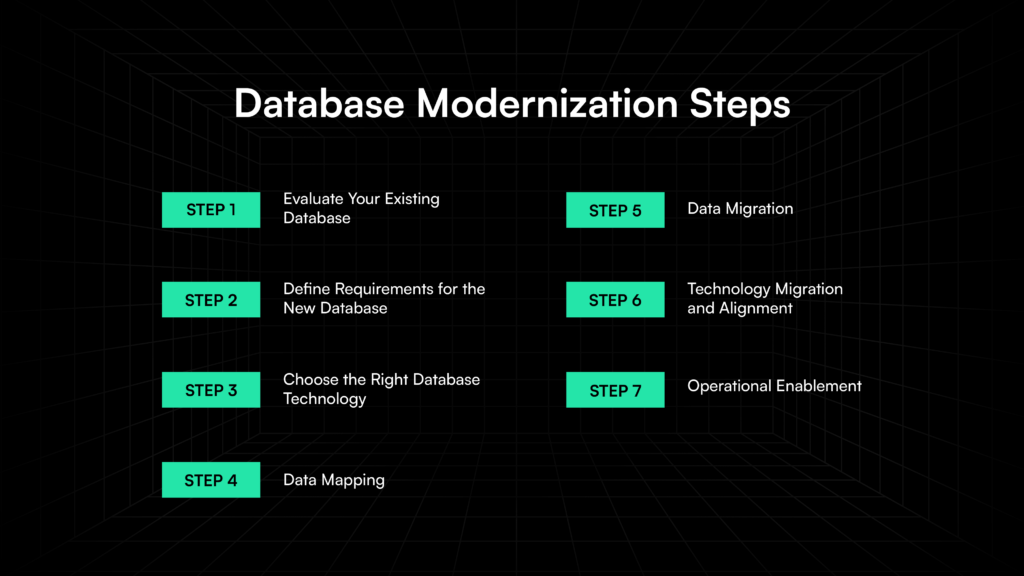
Step 1: Evaluate Your Existing Database
Start by getting a clear picture of your current setup—a kind of health check for your database.
Identify what’s running smoothly and what’s causing constant friction. Is performance lagging? Does it choke on new data?
List out these pain points and bottlenecks. This honest assessment will reveal exactly where the new system needs to deliver, setting the groundwork for meaningful improvements.
Step 2: Define Requirements for the New Database
Once you know what’s not working, it’s time to think about what you want.
What are the must-haves for your new database? Is it faster processing, better analytics, or maybe improved security features?
Also, consider the technologies and resources you’ll need to make this happen. Having clear requirements will guide your decisions down the line.
Step 3: Choose the Right Database Technology
The landscape of database technologies is vast—SQL, NoSQL, cloud-based options, and more. Take the time to find a solution that aligns with both your goals and the unique needs of your organization. Research, compare features, and involve your team to make sure the choice truly supports your vision.
Step 4: Data Mapping
Think of data mapping as creating a blueprint for your transition. Plan exactly how data will move from your old system to the new one, so every piece ends up in the right place. This step reduces the risk of data loss and sets a clear path for a smooth transfer.
Step 5: Data Migration
With your map in hand, it’s time to begin the move. Follow best practices for data migration and thoroughly test each step to catch potential issues. This process ensures your new database is ready to scale as your application evolves.
Step 6: Technology Migration and Alignment
As you begin, ensure your migration plan aligns with strategic objectives. Utilize reliable tools to automate the transition of both data and schema, minimizing errors and saving valuable time. This approach helps the new database integrate seamlessly with your existing environment.
Step 7: Operational Enablement
Once the migration is complete, focus on training and enablement. Equip your team with best practices and skills to effectively operate the new system. This investment not only boosts productivity now but also lays a foundation for future migrations across applications.
Database Modernization Readiness Checklist
- Inventory all active databases, stored procedures, and interlinked applications.
Ensure you have visibility into schema structures, business logic encapsulated in procedures, and external system dependencies. - Grant access to schema definitions, metadata, and sample data for analysis.
Legacyleap’s Gen AI agents require structured inputs to perform effective comprehension and parity mapping. - Tag sensitive fields and compliance-critical tables (e.g., PII, PHI, financial records).
This allows for early masking, encryption planning, and regulatory-safe transformation. - Decide modernization targets: cloud RDBMS, NoSQL, or hybrid setups.
Identify if you’re moving toward Amazon Aurora, PostgreSQL, Redshift, or other platforms. - Establish business continuity expectations during migration.
Define rollback needs, downtime windows, and acceptable performance thresholds. - Review stored procedure complexity and refactor readiness.
High-complexity procedures may need manual intervention even with Gen AI. - Set goals for post-modernization validation: parity, performance, and reporting accuracy.
Use these benchmarks to guide automated test case generation and acceptance. - Align Dev, Ops, and Data teams around security, rollout, and governance responsibilities.
Gen AI can reduce friction, but cross-functional clarity is still essential for success.
What Types of Databases Are Available for Modernization?
Now, let’s explore the different types of databases available today. Each type serves specific needs and use cases, so it’s important to understand the differences when deciding which one might be right for your organization.
Some of the most popular types of databases include:

1. Relational Databases (RDBMS)
These are the classic databases that use structured query language (SQL) to manage and manipulate data. Data is organized into tables with rows and columns, and relationships between tables are defined through keys.
Examples: MySQL, PostgreSQL, Oracle Database, Microsoft SQL Server
Use Cases: Ideal for applications requiring structured data, complex queries, and transactions, like financial systems and customer relationship management (CRM) software.
2. NoSQL Databases
NoSQL databases are built to handle unstructured or semi-structured data, offering flexibility in data models and high scalability. They come in various types, including document stores, key-value stores, graph databases, and more.
Examples: MongoDB, CouchDB, Apache Cassandra, HBase
Use Cases: A content management system stores diverse articles and user comments with varying structures to allow for flexible content creation and rapid scaling.
3. In-Memory Databases
These databases store data primarily in memory (RAM) for faster access and processing. They are excellent for applications requiring quick response times.
Examples: Redis, Memcached, SAP HANA
Use Cases: Real-time analytics, caching, and applications with high transaction rates.
4. Cloud Databases
These databases are hosted on cloud platforms and can be relational or NoSQL. They offer scalability, high availability, and reduced management overhead.
Examples: Amazon RDS, Google Cloud Firestore, Microsoft Azure SQL Database
Use Cases: Applications that require scalability and flexibility without the need for on-premises infrastructure.
5. Distributed Databases
Distributed databases spread data across multiple physical locations, whether on different servers or geographical locations. They enhance availability and fault tolerance.
Examples: Apache Cassandra, Amazon DynamoDB.
Use Cases: The distributed database allows the retailer to store product information, user profiles, and order histories across various data centers. This ensures that a customer in Europe can quickly access product details and place an order without delays caused by long-distance data retrieval.
Legacy vs. Modern Databases in the Modernization Context
| Feature | Legacy Databases | Modern Databases |
| Scalability | Vertical scaling, hardware-bound; scaling often requires downtime | Elastic horizontal scaling with cloud-native flexibility (e.g., Aurora, DynamoDB) |
| Data Models | Relational, rigid schemas, tightly coupled with application logic | Support for relational, semi-structured, and schema-less models |
| Procedural Logic | Embedded business logic via stored procedures and triggers | Decoupled logic with API-driven workflows and microservice-friendly architecture |
| Performance | Index-heavy tuning, slower query resolution, limited parallelism | Built for high-concurrency, real-time analytics, and distributed processing |
| Compliance Readiness | Manual tagging and audits, higher risk of PII/PHI leakage | Gen AI-assisted detection of sensitive fields, encryption policies, audit trails |
| Migration Readiness | Poorly documented, undocumented dependencies, spaghetti logic | Designed for automation, integration, and seamless data replication |
| Testing & Validation | Requires custom scripts for validation post-migration | Supports Gen AI–driven parity testing, input-output simulation, and snapshot diffing |
| Operational Overhead | High DBA dependency, manual backups, patching, and version lock-in | Managed services, built-in resilience, auto-patching |
| Integration | Limited ML/analytics compatibility | AI/ML-ready, integrates with cloud data lakes and real-time pipelines |
What Are the Biggest Risks in Database Modernization?
The path to database modernization can bring significant benefits, but it’s important to recognize the common mistakes that can derail the process. By anticipating these challenges, organizations can take proactive measures to stay on track. Here are some key risks to avoid:
- Inadequate Planning and Strategy: Rushing into modernization without a clear strategy is a recipe for disaster. Failing to assess existing systems, set clear goals, and map out a migration plan can lead to delays, unexpected issues, and increased costs.
- Overlooking Data Quality Issues: Migrating poor-quality data can ruin the value of your new system. Data issues like duplicates, inconsistencies, or missing information can disrupt operations. A thorough audit before migration is essential to ensure data integrity.
- Underestimating the Complexity of Integration: Integrating a new database with legacy systems can be trickier than expected. Compatibility issues can create data silos and hinder business processes. Testing integrations in advance is crucial to avoid disruptions.
- Neglecting Training and Change Management: Even the best database won’t be effective if your team doesn’t know how to use it. Failing to invest in training and managing change can lead to poor adoption and underperformance. A well-prepared team is essential for success.
- Ignoring Security Implications: Moving data to the cloud or adopting new technologies can expose your organization to new security risks. It’s crucial to implement encryption, access control, and compliance measures to protect data and avoid regulatory issues.
- Setting Unrealistic Timelines: Rushing through the modernization process may compromise quality. Realistic timelines allow for testing, adjustment, and a smoother transition, reducing the chances of costly mistakes down the line.
Why Is Database Modernization Essential for the Future?
Modernizing your database is essential for improving efficiency, reducing costs, and staying competitive. At Legacyleap, we simplify this process to ensure maximum performance, security, and scalability.
Here’s how we help:
- Comprehend: Use GenAI tools to analyze your codebase and uncover optimization opportunities.
- Assess: Conduct in-depth evaluations to align modernization with your business goals.
- Safety Net: Keep legacy systems operational and protected during the transition.
- Deploy: Minimize disruptions with a seamless deployment process.
- Upgrade: Implement incremental upgrades to improve systems without a full overhaul.
Our tools, like dependency graphs and automated documentation, provide clarity, predict challenges, and address performance issues proactively.
Quick Decision Guide: Is It Time to Modernize Your Database?
- Your stored procedures are hard to maintain, undocumented, or tightly coupled to app logic.
- Data silos and performance bottlenecks are slowing down analytics or reporting.
- Manual audits make it hard to meet compliance expectations like HIPAA or GDPR.
- Your team is hesitant to migrate due to risk of functional breaks or downtime.
- Legacy databases can’t scale with newer workloads or integrate with cloud ecosystems.
- You’re unable to support AI/ML, real-time insights, or event-driven architectures.
Ready to modernize? Contact us today to future-proof your database infrastructure today.
FAQs
Q1. How do I know if my organization needs database modernization?
If your systems are struggling with performance issues, high maintenance costs, outdated procedural logic, compliance gaps, or integration limitations with modern tools and cloud platforms, it’s time to consider modernization.
Q2. How long does a typical database modernization project take?
Timelines vary based on complexity, but with Gen AI–driven analysis, code translation, and validation, many projects can see major milestones delivered in 6–12 weeks, significantly faster than traditional reengineering approaches.
Q3. What is the cost of database modernization?
Costs depend on database size, legacy tech, customization, and regulatory needs. However, Legacyleap’s Gen AI approach reduces manual rework, enabling faster ROI by cutting labor, downtime, and post-migration remediation costs.
Q4. Can database modernization be done without downtime?
Yes. Incremental cutover and blue-green deployment strategies, supported by Gen AI parity checks and rollback automation, allow for modernization with minimal or zero downtime in most scenarios.
Q5. What industries benefit the most from database modernization?
Heavily regulated and data-intensive industries like healthcare, BFSI, telecom, logistics, and government benefit most, especially when dealing with DB2, SQL Server, or Oracle-based legacy systems tied to core business workflows.


